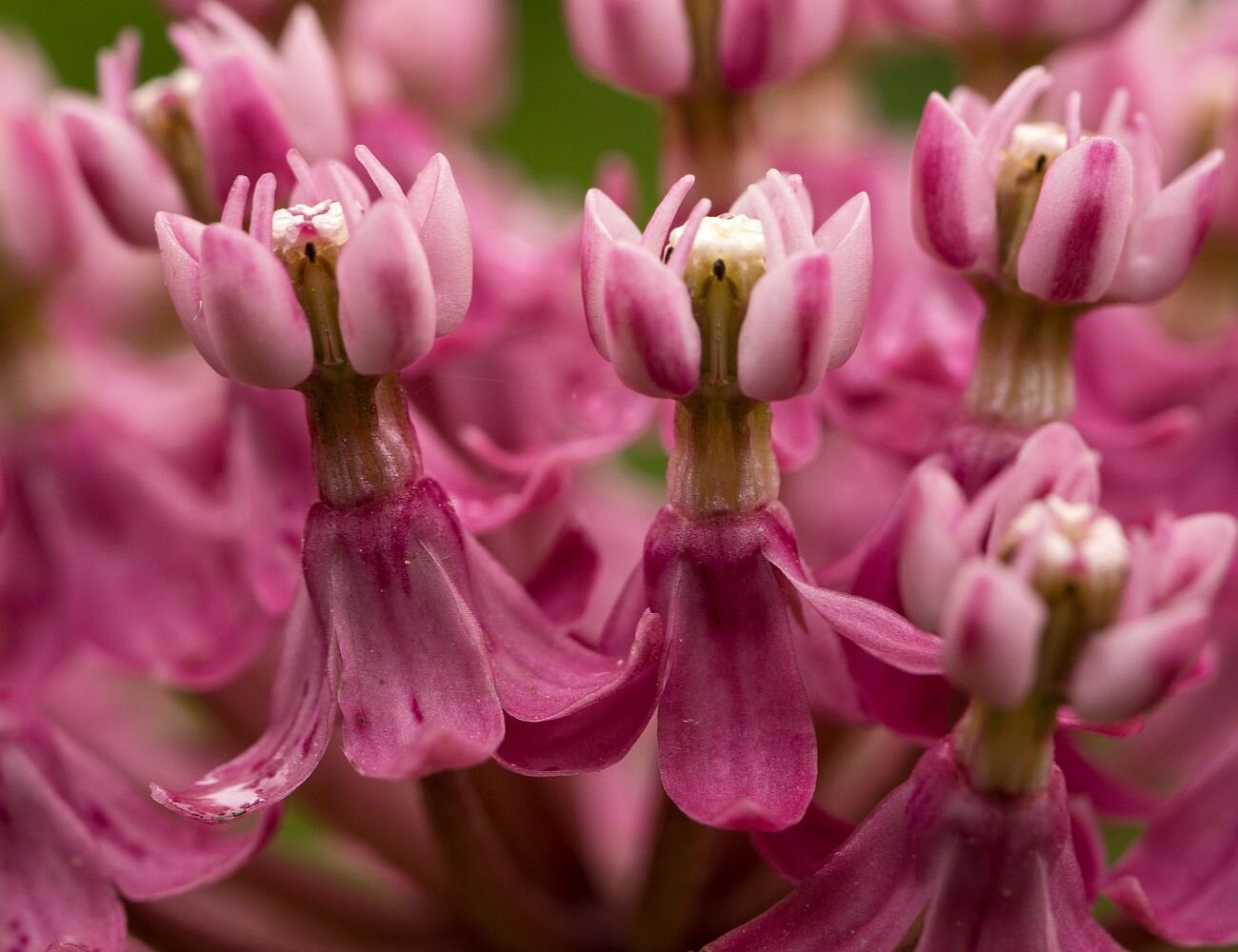Butterfly Milkweed (Ascelpias tuberosa)
Flower buds of Butterfly Milkweed
Common Milkweed (Asclepias syriaca) needs space to grow, but it rewards the gardener with a wonderful vanilla fragrance and lots of bees and butterflies!
Honeybees are addicted to the nectar of the Common Milkweed.
Swamp Milkweed (Asclepias incarnata) can grow in wet locations, but it is also perfectly happy in average garden soil. It is one of the easiest milkweeds to grow and rewarding for its value for pollinators.
A Sweat Bee (Halictus) taking nectar on Butterfly Milkweed (Asclepias tuberosa)
The caterpillar of the Monarch Butterfly (Danaus plexippus) is just one example of the many species that are specialized to live from Milkweed plants.
Nymphs of the Large Milkweed Bug (Oncopeltus fasciatus) on pods of Common Milkweed
The Red Milkweed Beetle (Tetraopes tetrophthalmus) resting inside the flower umbel of Common Milkweed
The Red Milkweed Beetle is longer-bodied than the Milkweed Leaf-Beetle
Flower details of Swamp Milkweed. Like with all Milkweeds, the pollen is not loose but packed into a so-called pollina, which clings to the legs of its pollinators in order to be transferred to another plant.
The Whorled Milkweed (Asclepias verticillata) is now less common but the smaller flower size indicates that it nourishes a different set of pollinatiors (most likely smaller bee species) and thus fulfills an important role in its ecological niche.
Caterpillars of the Milkweed Tiger Moth (Euchaetes egle) typically feed on older foilage and therefore do not usually compete for food with Monarch caterpillars,
Many bumblebee species, including the Two-spotted Bumblebee (Bombus bimaculatus) visit milkweeds and function as milkweed pollinators (here on Asclepias syriaca)
The Milkweed Leaf-Beetle (Labidomera clivicollis) is able to consume milkweed foliage.















